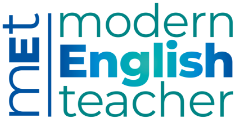Fact, opinion, stance: differentiating complex concepts in EAP
Clare Maas recommends activities to help EAP students distinguish between fact, opinion and stance in academic texts so that their own academic writing can be improved.

In most introductory academic writing courses, both within EAP and for students whose main language is English, the fact that academic texts display an author’s ‘stance’ is mentioned as a key point. But ‘stance’ is quite a complex concept for undergraduate students to understand, and in my experience they commonly confuse it with ‘personal opinion’. I often read essays which include the presentation of evidence for contrasting views on a topic, sometimes very well evaluated, but then in the conclusion the student has written something vague, such as ‘In my opinion, everyone should be allowed to have their own view on the topic’. Now this might be an open and tolerant perspective to have in life, but in academic writing, we usually expect the author to take a stance, based on the evidence they discuss in their text. And so I’ve started to develop ways to help my EAP students (at B2+ level) understand ‘stance’ through some communicative exercises.
I start my lessons with the questions in Figure 1 displayed on an OHT or PowerPoint slide. In pairs or small groups, the students ask each other the questions and answer them. This kind of task can help build a supportive atmosphere in the class: it feels like a warmer or ‘getting to know you’ activity, but the answers the students share can be used to help them understand the difference between facts, opinions and stance.
After using concept-check questions to make sure the students understand the differences between these three types of information, particularly opinion and stance, we move on to a task that gets them discussing the inclusion of the different information in various text types. This could also be done as groupwork, and I try to make it into a game, with each group competing together. We label one wall each with the terms fact, opinion and stance. Then I call out a text type (eg news article, application letter, university essay), and the groups have to position themselves next to the walls to indicate how frequently they think that kind of information is in the text type I’ve just called out. The groups discuss before moving, and are also allowed to split up. For example, if they believe an academic essay will include some facts but more stance, then one group member can stand by the fact wall while the others go to the stance wall. Often, I find getting the students up and moving at this stage in the lesson can reenergise the class, and seeing these physical groupings of students helps them to visualise clearly the balance of the types of information commonly found in the different text types.
To bring home the point about stance in academic writing, and to quieten down the class after the commotion of moving around, I then provide the students with a printed excerpt from an academic article. One I’ve used with my students is in the box below, as an example, but I would suggest finding a text on a topic relevant to your own students’ fields of study. The students are tasked with highlighting or circling any facts they find in the article excerpt, and underlining the points which express the author’s interpretation of evidence – stance. I ask them to do this individually, and sometimes compare with a neighbour, before sharing and discussing the answers in plenary. The discussion allows me to emphasise again the prevalence of stance in academic writing, as well as highlighting some of the ways, however subtle, it can be expressed. Usually, my students are quite surprised that there are so few hard facts in the text!
In this lesson, I aim to move my students closer to an understanding of stance in academic work, by starting with them talking about themselves, then substantiating their understanding of the terms fact, opinion and stance, and finally by showing an authentic example of the balance of these in an academic text excerpt. I have had good results from this approach, and I’m sure my activities can be used or adapted for use in other EAP contexts, too.
- Where and when were you born?
- Do you eat meat? Drink alcohol? Smoke?
- Do you think New York would be a nice place to live?
- What kinds of music can calm you down or cheer you up?
- How much do you know about religious education in British schools, and how does this affect your view on whether it is appropriate?
- Based on your experience as a student, what kind of note-taking do you consider to be the most effective?
Figure 1
Once the groups have discussed all the questions, or after a defined period of time that I give them, I interrupt the groupwork and set the next task: I ask them to decide on the questions in Figure 2, also displayed on an OHT or PowerPoint slide. [Answers: a) Qs 1 and 2, b) Qs 3 and 4, c) Qs 5 and 6]
Regarding the questions you have just answered:
- Which of them prompted answers with a piece of information that is fixed, and not debatable?
- Which prompted answers showing one person’s preference or attitude?
- Which prompted answers explaining how background understanding informs someone’s view on a topic?
Figure 2
Again, this time after just a few minutes, I interrupt the groupwork and hand out small cards with definitions of fact, opinion and stance on them (see Figure 3).
Fact: something known or proven to be true.
Opinion: a personal belief or appraisal, based on insufficient evidence to allow certainty.
Stance: a position on a certain issue, based on consideration
Figure 3
I then ask the students to identify which of the terms (fact, opinion or stance) expresses the types of answers prompted by the questions categorised now as a, b or c. [Answers: a) fact, b) opinion, c) stance]
Clare Maas (née Fielder) holds post-graduate qualifications from the University of Wales and Trinity College London, UK. Before moving into tertiary education, she taught English at German grammar schools, and ESP at several language academies in the UK and Germany. Her professional interests include EAP materials development and CPD for teachers. She also blogs at ClaresELTCompendium.wordpress.com.



